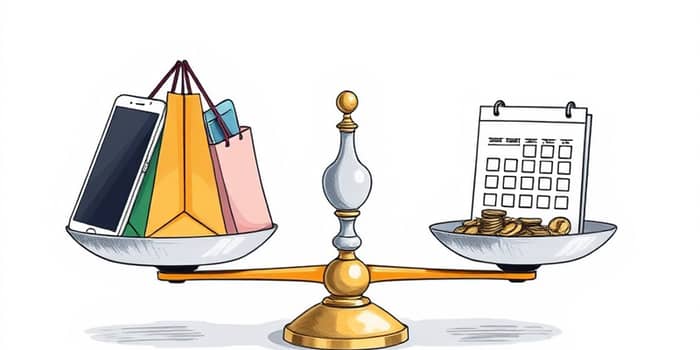
Buy Now, Pay Later (BNPL) services can offer exciting flexibility, but they also carry potential pitfalls. This article guides you through leveraging these tools responsibly.
From understanding the underlying mechanics to spotting red flags, our goal is to help you make informed decisions and avoid impulsive spending habits while reaping the benefits of modern payment options.
BNPL is a short-term financing option available at checkout that lets consumers split purchases into installments. The most common framework is the “pay-in-four” model, where you make an initial down payment—usually 25% of the price—and the remaining amount is divided over three further payments, typically every two weeks.
These plans are often advertised as interest-free, but that applies only if payments are made on schedule. Some longer-term or high-value plans may carry higher interest rates up to 36% APR or impose fees ranging from $2 to $15 for late or rescheduled payments.
The BNPL sector has witnessed explosive growth in recent years. Globally, transaction volumes are set to exceed $560 billion by 2025, growing at an annual rate of 13.7%. Some forecasts even predict reaching $680 billion in the same period.
In the United States, BNPL purchase volume is projected to hit $122.3 billion in 2025, up 10.9% year over year. About 91.5 million Americans—roughly one in four—use these services. The average U.S. BNPL loan size is $135, and active users carry an average total exposure of $2,085 across all their BNPL plans.
Adoption skews younger: 82% of Gen Z and 77% of Millennials express interest in BNPL, with 64% of Gen Z and 44% of Millennials having used it at least once.
BNPL platforms tend to excel in categories that involve moderate to high ticket items and lifestyle purchases. Typical use cases include:
Consumer brand affinity is notable: BNPL users are more likely than average shoppers to purchase premium electronics like gaming consoles and Apple devices, as well as private-label home appliances.
While interest-free installments sound appealing, missing a payment can trigger fees or even high APRs. About 41% of BNPL users admitted to making a late payment in the past year, up from 34% the year before. Around 11% of borrowers were actually charged a late fee in 2021.
Many users worry about stacking multiple plans unknowingly, leading to over-commitment. 32% of consumers fear overspending, while 41% are concerned about incurring interest or late charges.
Excessive reliance on these plans can also affect credit health. Missed payments may be reported to credit bureaus, harming your score and limiting future borrowing options.
To harness the benefits of BNPL responsibly, consider the following strategies:
Stay disciplined by budgeting your cash flow around upcoming installments and building an emergency buffer. If cash flow tightens, avoid taking on new BNPL plans until existing ones are settled.
Finally, treat BNPL like a tool, not a source of free money. When used judiciously, it can enhance your purchasing power and improve cash management. Misused, it can lead to unwanted debt and financial stress.
References













